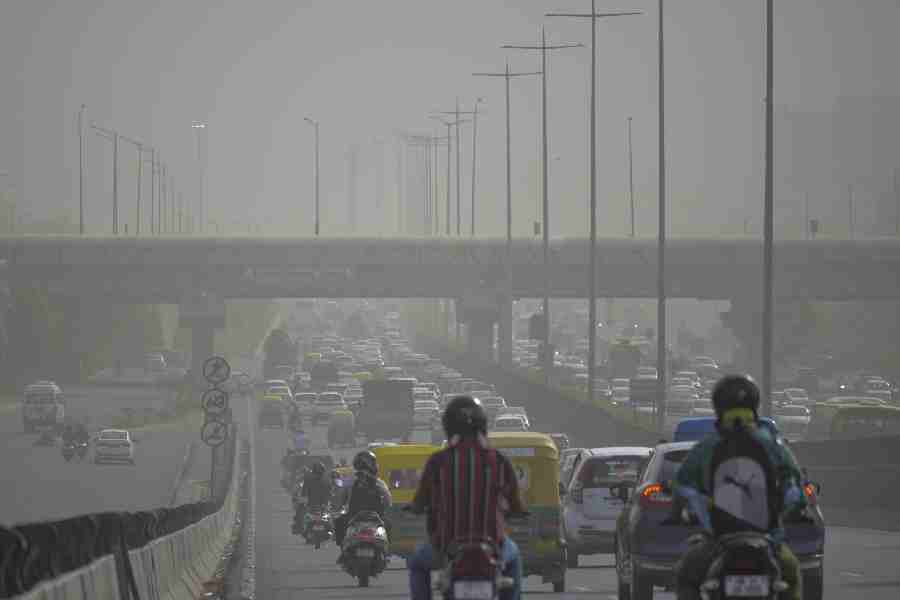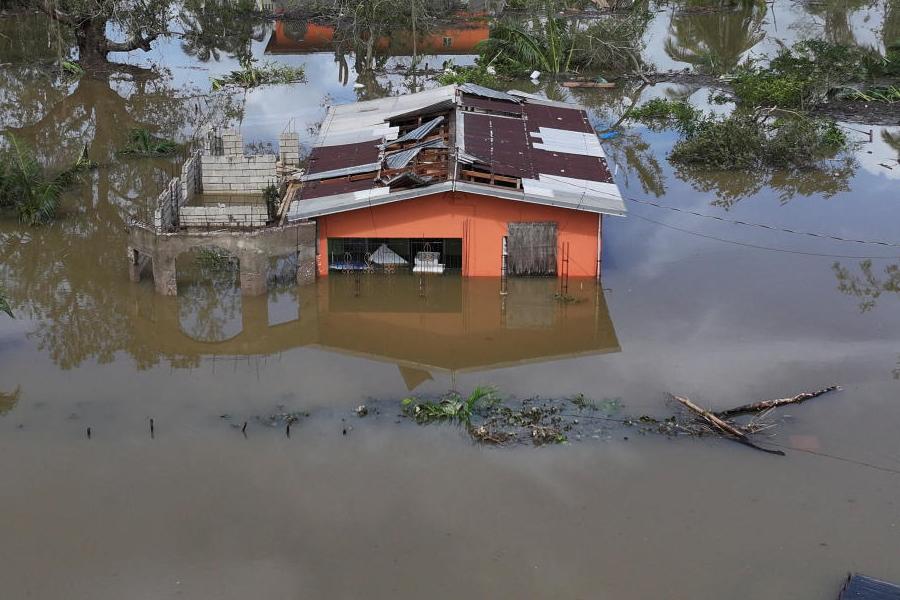The PM10 pollution in Delhi soared to hazardous levels on Tuesday as strong winds swept the city raising dust and leaving a thick blanket of haze over it.
The India Meteorological Department said dust-laden winds with speed up to 50 kmph breezed through the capital between 3 am and 6 am, lowering visibility to a mere 700 metres at 10 am at the Palam Observatory, close to the Indira Gandhi International Airport, as compared to 4,000 metres at 9 am on Monday.
By 3 pm on Tuesday, the overall air quality index had worsened to 260, from 162 at 4 pm on Monday.
The Delhi Pollution Control Committee data showed PM10 levels soaring to 3,826 micrograms per cubic metre at Jahangirpuri and 2,565 micrograms per cubic metre at Sri Aurobindo Marg.
According to the Central Pollution Control Board, PM10 levels up to 100 micrograms per cubic metre (for a 24-hour period) are considered safe.
The DPCC data showed PM10 levels rose to 1,542 micrograms per cubic metre at Vivek Vihar; 1,296 micrograms per cubic metre at R K Puram; 1,807 micrograms per cubic metre at Patparganj; 1,663 micrograms per cubic metre at Narela; 1,957 micrograms per cubic metre at Alipur; 1,661 micrograms per cubic metre at Dwarka Sector 8; 1,456 micrograms per cubic metre at Mundka; 1,662 micrograms per cubic metre at Major Dhyan Chand Stadium; 1,527 micrograms per cubic metre at Wazirpur; 1,580 micrograms per cubic metre at Ashok Vihar; and 1,881 micrograms per cubic metre at Okhla Phase 2 in the morning hours.
Satellite pictures released by the meteorological office showed a thick layer of dust covering large parts of northwest India.
Meteorologists have attributed the dusty conditions to a combination of intense heat in northwest India over the past five days, parched soil due to the absence of rainfall and strong winds that have persisted since midnight.
"Strong dust-raising winds prevailed over Delhi in the early hours. The wind speed dropped from 45-50 kmph to 12 kmph by 9 am and came down further during the day, allowing the dust to settle down," Kuldeep Srivastava, head of IMD's regional forecasting centre, said.
"Dust concentration has gone up multiple times. The PM10 concentration rose from 140 micrograms per cubic metre at 4 am to 775 micrograms per cubic metre at 8 am. It is mainly because of strong gusty winds prevailing over the area. Dust will settle down soon," said V K Soni, head of IMD's Environment Monitoring and Research Centre.
Dust particles, especially fine particulate matter (PM2.5), can penetrate deep into the respiratory system when inhaled. They can irritate the lungs, trigger respiratory problems, and exacerbate existing conditions such as asthma, bronchitis, and allergies.
Except for the headline, this story has not been edited by The Telegraph Online staff and has been published from a syndicated feed.











